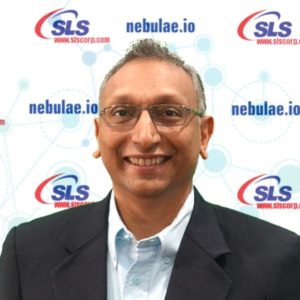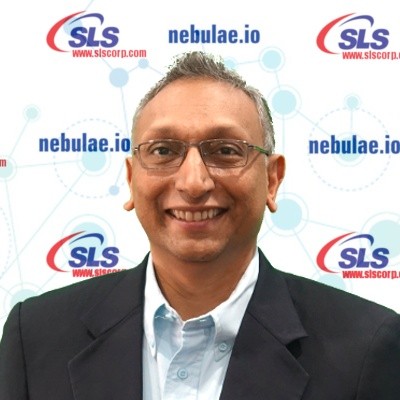Paresh Patel is the founder of System Level Solutions (SLS), and has expertise in a range of subjects related to electronics and IoT—including design and development of ASICs, FPGAs, PCBs, et al. He is now driving SLS to make it a giant in the IoT sector. Rahul Chopra spoke to him on how the IoT industry is shaping up, and SLS’ plans to address the opportunities it presents…
Q. Many are saying that the IoT is just a buzzword and that not much has changed when it comes to tech adoption. What’s your take on it?
A. Yes, the term ‘IoT’ is very much overused within the industry in that if a product touches the Internet, it is deemed to be the IoT. There are many components to IoT—sensors, hardware, software, communication, software, analytics, apps, security. The IoT is bringing all these together and causing a major convergence. Each type of the provider can claim to be in the IoT, and rightly so. And that’s causing the blurring.
We have seen the mad rush of people developing single solutions, making things smart by deploying sensors and providing data visualization in order to gain a piece of the year 2020’s projected $7.1-trillion market.
At SLS, we realized that these were the endpoints and that we needed to go deeper and focus on how things were brought and held together.
In the last three years, we have written millions lines of code and filed three patents. By fully leveraging our expertise of combining disparate hardware, software, cloud and IP, we are addressing needs of the IoT at its core in order to realize the true value of the IoT.
Q. How do you see the technology gap between India and the rest of the globe?
A. From the software point of view, I see no gap—India can run circles around the rest of the world.However, from the hardware point of view, there is a huge gap. How many system-on-chips (SoCs) do you see with an Indian company’s logo laser marked on them? In China, you have Allwinner, Rockchip, RDA, ZTE, HiSilicon and the list goes on.
I am not saying we need to have IC fabrication facilities, but we do need to have infrastructure that nurtures a hardware eco-system. The government will need to help and has started with initiatives like Make in India, Start Up India and Invest India.
Q. What’s your advice to design engineers who want to make the most of IoT application development opportunities?
A. Build, build and build! When you touch the IoT, you build expertise in both hardware and software. Building knowledge that can be applied does lead to rewards.
Q. How can academicians prepare themselves and their students for the IoT era?
A. Both academicians and students should start with the basics. However, it can’t be a research exercise. It must be hands-on. Kits should not be left in the academicians’ cupboard only to be taken out when there is an audit. These must be in the hands of students and, yes, the students will break them—that is all part of the learning process.
Just connecting some piece of hardware to the Internet doesn’t mean you are now an IoT expert. The best way to learn is to pick a real-world problem and solve it end-to-end. That does take planning from the academicians and students alike.
For example, at SLS we created a BigData team. To accelerate learning, we decided to enter a competition on Kaggle to solve a real-world problem using artificial intelligence (AI) and machine learning (ML)—something this web-based platform excels at. Out of approximately 2000 teams, we ranked 16th for detecting lung cancer from DICOM images. We wrote a paper about this method, which was accepted at International Conference on Advanced Computational and Communication Paradigms (ICACCP).

Q. What are the key challenges for developers in making IoT solutions secure?
A. The challenge is to provide end-to-end security in a cost-effective manner. With millions of transactions occurring every second, a penny per transaction starts adding up very quickly. A data security policy needs definition from the conceptual stage with vulnerability analysis of the data to attacks. Not just one type of security is enough. This means multiple security layers must be implemented. In the absence of policy and standards that govern IoT implementations, developers must ensure use of the best practices.
Without being a crypto-expert, one must seamlessly integrate security into network and end devices. Only the necessary data must be collected, retained and disposed of—all securely keeping in mind user access rights. The good news is that there are solutions to do this—the Nebulae Framework is one such solution.
Q. SLS team has been focusing on the Nebulae platform recently. How would you explain the same to IoT solution developers?
A. As the IoT has gained popularity, our customers have been asking us for solutions. At first, the solutions we provided were specifically built to meet customer needs. Unfortunately, the work performed wasn’t repeatable. So for the next client, we needed to start from scratch again. That’s when we decided to invest in creating a common interface between devices, which could talk across different communication networks and, being held together with the most relevant and flexible middleware, would help us build hybrid networks in order to develop, manage and integrate a variety of IoT solutions; thus Nebulae was born.
Connecting hundreds, let alone millions, of devices proves difficult when keeping in mind communication protocols, security, guaranteed message delivery, hardware and software updates.
Nebulae provides a platform wherein IoT solution developers can quickly and easily develop their solution and focus on delivering the business logic.
Q. What are the top application areas for Nebulae?
A. There are so many IoT applications that have an opportunity to solve India’s entrenched problems; in cities, healthcare and agriculture. However, the greatest impact is in manufacturing. Nebulae can not only deliver Make In India but also add an intelligent, secure and scalable framework so that we can compete globally. As factories gear up, they have an unprecedented opportunity to make a technological leap. Nebulae allows for customized, predictive maintenance solutions, and optimization solutions based on the ground realities in India, ultimately saving money and creating a better product.













